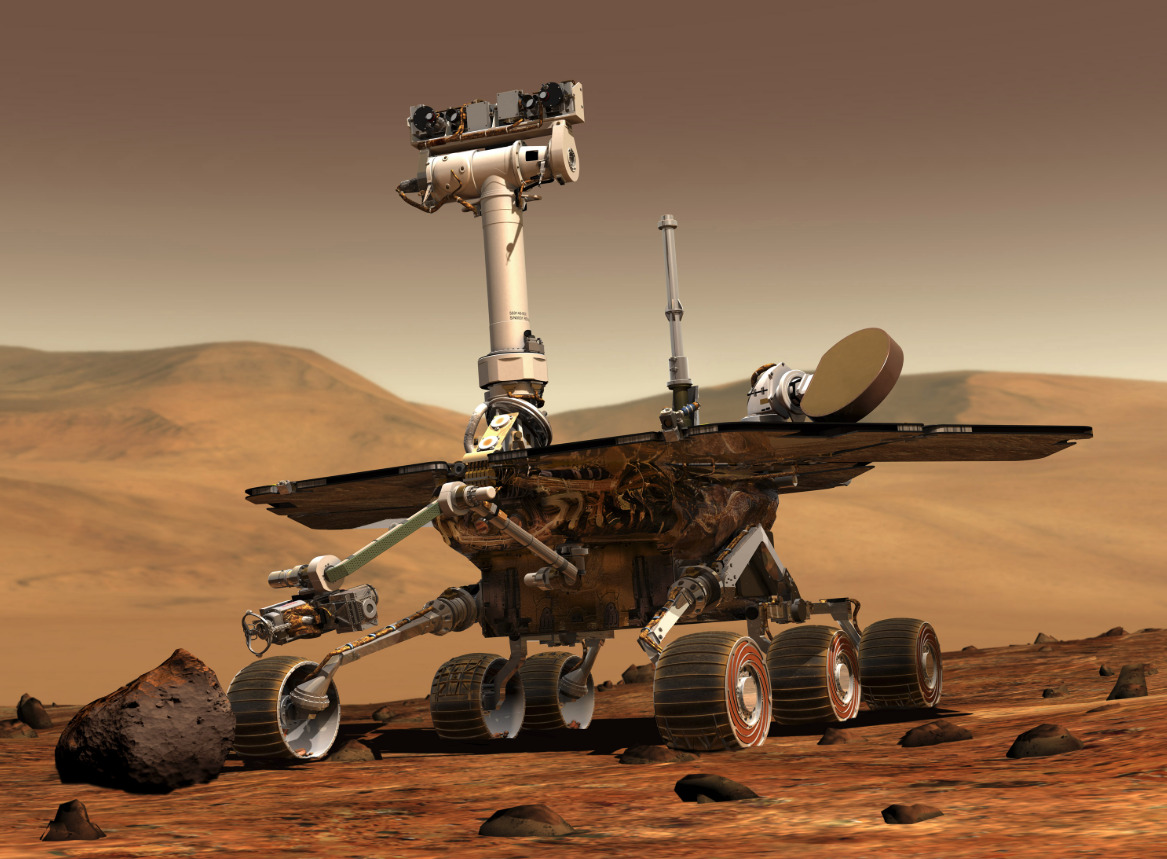NASA Thought It Got A Signal From The Silent Opportunity Rover, But It Broke Our Hearts Again
NASA's Mars Opportunity rover has been sitting still on Mars since June. It was then that a massive dust storm began to swallow up the planet, cutting of the sunlight to the rover's solar panels and forcing it to go dormant. The Opportunity team has been waiting patiently for the rover to wake back up ever since, and when a signal identified as coming from Opportunity popped up on NASA's Deep Space Network on Thursday it got a lot of people very excited.
Unfortunately, the signal, whatever it was, didn't actually come from the troubled robot. NASA's Jet Propulsion Laboratory quickly addressed the supposed communication, noting that "further investigation" revealed the signals weren't actually from Opportunity at all.
The Deep Space Network is a live feed of NASA's communications with its various spacecraft, probes, and rovers. When they show up on the publicly-available list of signals they are labeled with the name of whatever machine was responsible for the signal. You can imagine everyone's excitement when the following signal popped up:
DSS 54 receiving data from Opportunity at 11b/s.
IN LOCK OFF 1 MCD2— Deep Space Network (@dsn_status) November 15, 2018
If nothing else, it was at least hope that Opportunity was indeed still alive. Its handlers had been hoping that the now-clear skies and windy season on Mars would dust off the rover's solar panels and allow it to phone home. Then, JPL broke the bad news:
Today https://t.co/V3WGqQrrvJ showed what looked like a signal from @MarsRovers Opportunity. As much as we'd like to say this was an #OppyPhoneHome moment, further investigation shows these signals were not an Opportunity transmission.
— NASA JPL (@NASAJPL) November 15, 2018
But if it wasn't Opportunity, then what was the signal? JPL offers a somewhat vague explanation:
Test data or false positives can make it look like a given spacecraft is active on https://t.co/V3WGqQrrvJ. We miss @MarsRovers Opportunity, and would be overjoyed to share a verified signal with you. Our work to reestablish comms continues.
— NASA JPL (@NASAJPL) November 15, 2018
Well that's a bummer. Still, NASA isn't giving up hope that the rover will come back to life. Originally designed to last only a few months, it's spent nearly a decade and a half exploring the Red Planet and may continue to do so if it can just snap out of its funk. We'll be keeping our fingers crossed.
